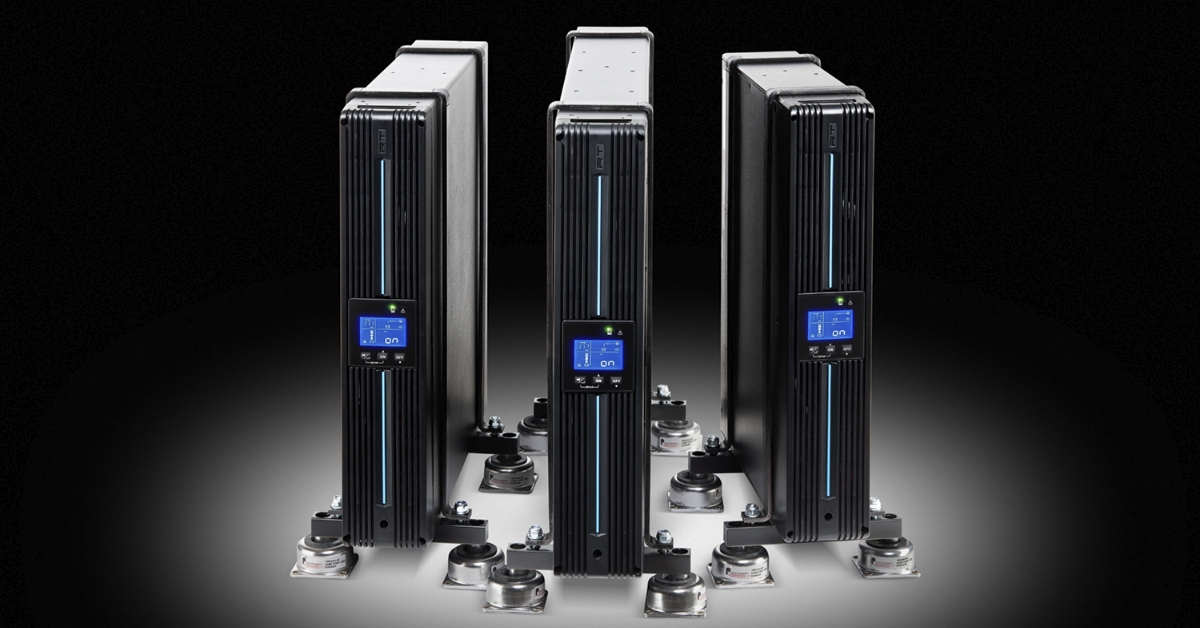Du er her: Forside -> English - > What is a UPS?

What is a UPS?
Publisert 20.01.2023
A UPS, or Uninterruptible Power Supply, aims to ensure continuous power supply to critical installations.
Simply put, a UPS has two main tasks:
- To keep critical installations running during power outages
- To protect connected equipment from unstable voltages
UPS secures critical equipment against power outages
The main task of an UPS is to provide uninterrupted power supply to the equipment it is connected to.
In various industries and markets such as industry, maritime, aquaculture, health, data centers, roads and tunnels, we rely on continuous processes and work, regardless of what may happen. In these cases, it is essential to have a good emergency power solution in place.
If the power drops to an insufficient voltage level or there is a complete power outage, a UPS will almost instantly switch on and provide enough power for the critical installation to continue functioning properly.
The amount of time a UPS can keep critical installations running can vary from a few minutes (until a generator takes over) to several hours.
UPS protects against unstable voltages
However, protection against complete power outages is not the only reason you need a UPS.
A UPS (depending on the model) also protects the connected devices against common power problems, such as voltage fluctuations, surges, brownouts, line noise, frequency variations, and overvoltage.
These are conditions that can damage the electronics and thus affect the performance and reduce the lifespan of your equipment. But with UPS, you will get a cleaner and more stable supply of electricity that gives the equipment connected to the best possible living conditions.
Learn more: 3 different types of UPS - these are the differences
What equipment can be connected to a UPS?
There are various types of UPSs available in the market today, but primarily they are divided into three types: Standby UPS, Line-Interactive UPS, and Online UPS.
To choose the right UPS, you must first determine which type of UPS fits the level of safety you require. Then, you need to correctly size the UPS so that it can deliver the necessary capacity during a power outage.
While a UPS is a useful device to protect most electronic equipment from power outages and fluctuations, it's important to note that there is a limit to how much load a UPS can handle. You should check the maximum load capacity of the UPS and ensure that you do not exceed this limit by connecting too many devices.
Read more: 4 maintenance tips for ensuring UPS efficiency
Who needs a UPS?
If your business has critical installations that cannot afford downtime due to unforeseen events such as a power outage, a UPS would be an excellent choice to provide a safer working environment.
A UPS ensures that all connected systems are protected from power disruptions, thereby increasing uptime and ensuring safe and secure operations.
Here you can read more about some of the companies that have chosen Anda Olsen as their UPS provider:
- Supplying UPS to 17 VARD vessels
- Why SalMar's ground-breaking salmon facility in Senja choose UPS from Anda-Olsen
- Secures critical installations on Havila's new environmentally friendly passenger ship
Or you can check out this link to find all the advantages of UPS from Anda-Olsen.